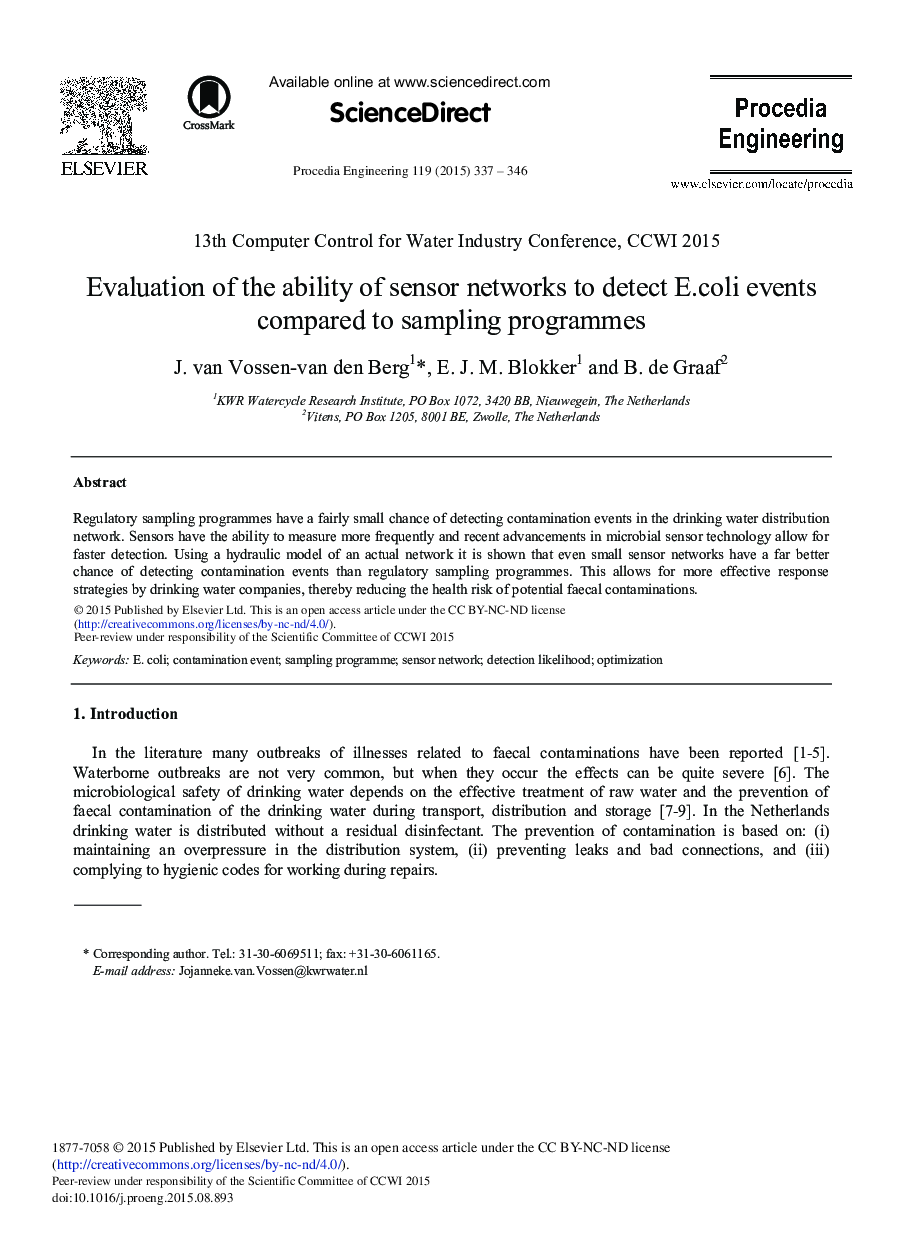| Article ID | Journal | Published Year | Pages | File Type |
|---|---|---|---|---|
| 855400 | Procedia Engineering | 2015 | 10 Pages |
Abstract
Regulatory sampling programmes have a fairly small chance of detecting contamination events in the drinking water distribution network. Sensors have the ability to measure more frequently and recent advancements in microbial sensor technology allow for faster detection. Using a hydraulic model of an actual network it is shown that even small sensor networks have a far better chance of detecting contamination events than regulatory sampling programmes. This allows for more effective response strategies by drinking water companies, thereby reducing the health risk of potential faecal contaminations.
Related Topics
Physical Sciences and Engineering
Engineering
Engineering (General)
